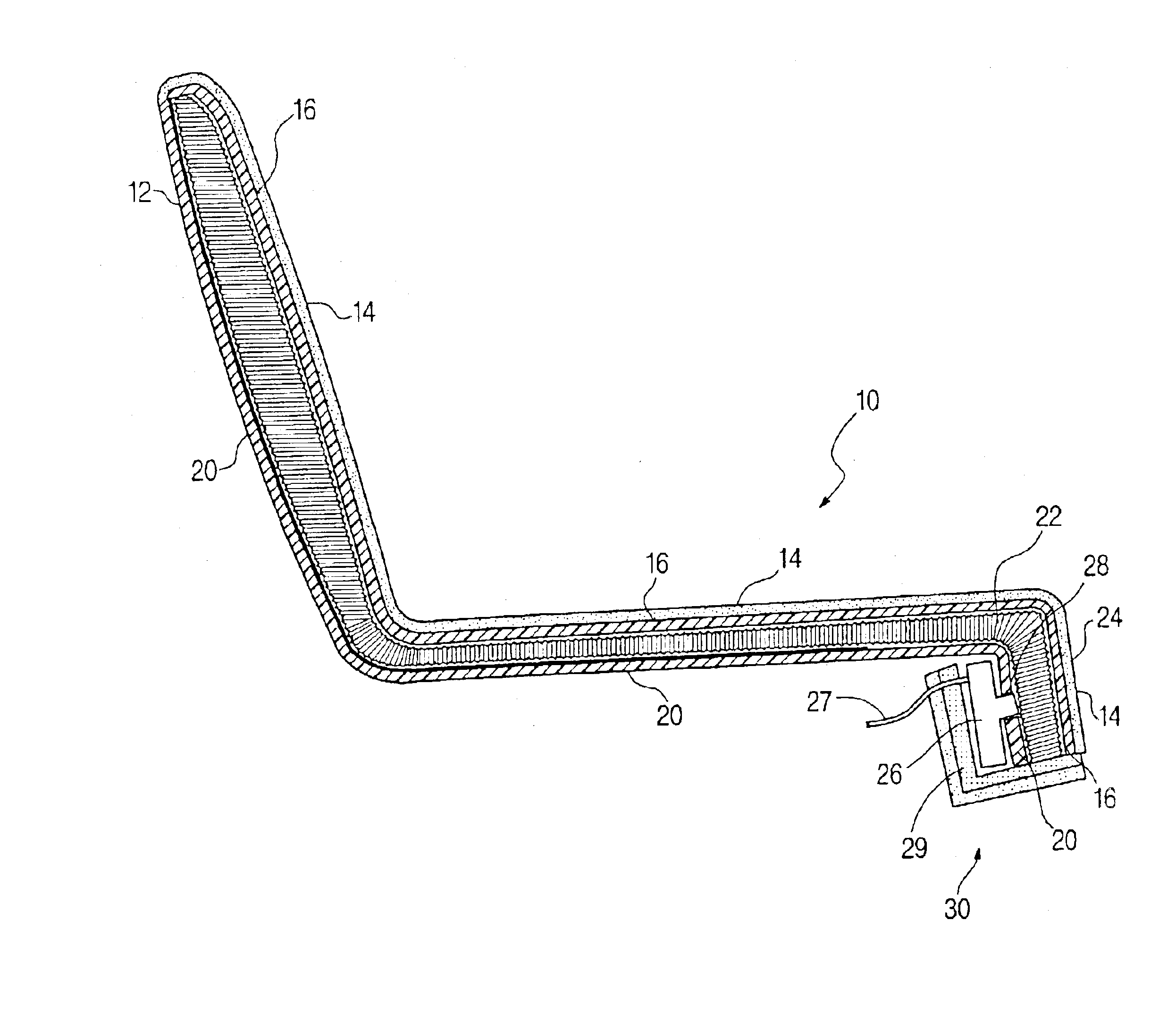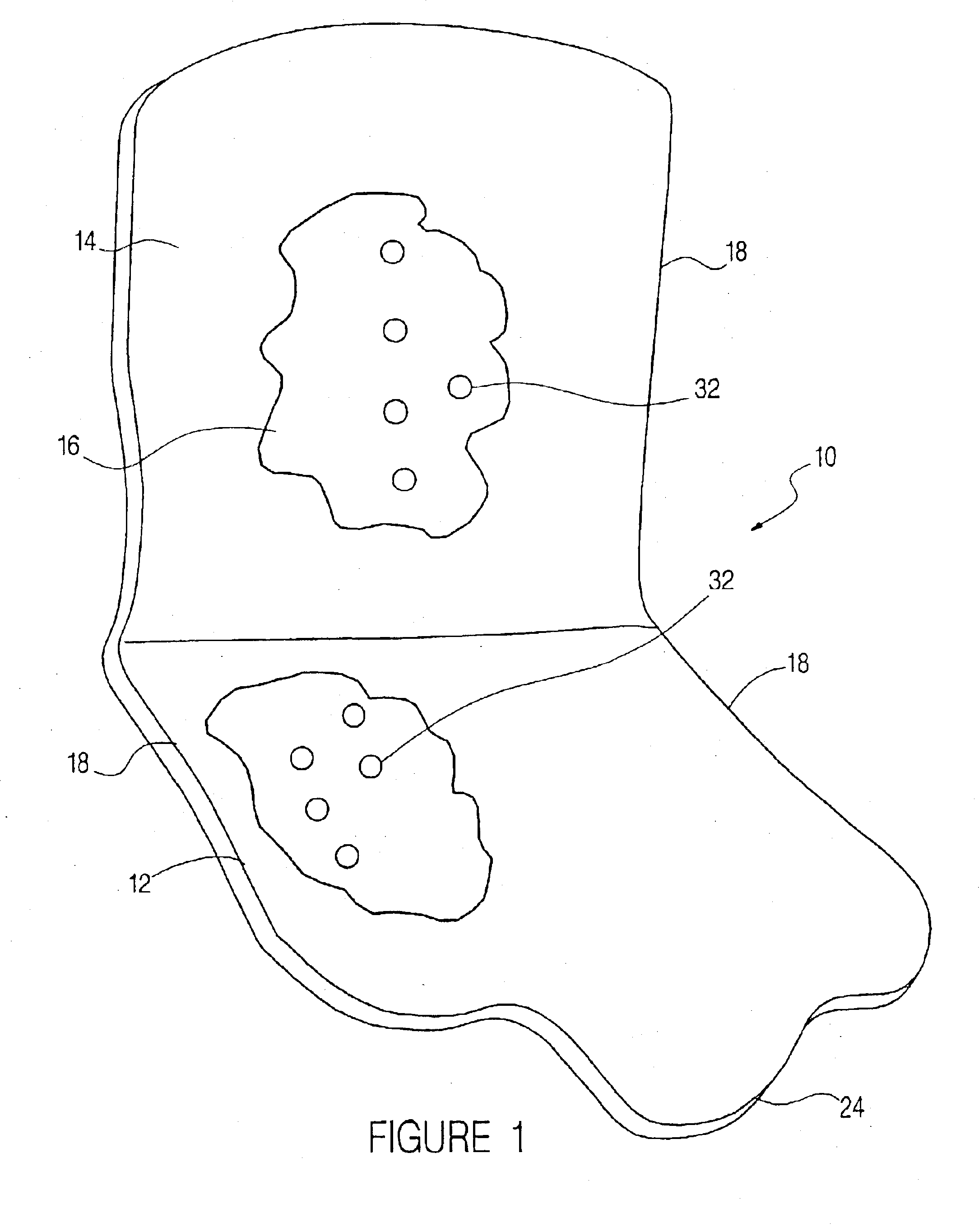Ventilated seat
a technology for ventilating seats and vehicles, applied in the direction of chairs, transportation and packaging, vehicle arrangements, etc., can solve the problems of insufficient resolution of problems, difficult to warm or cool the cold seats quickly, and excessive sweating of occupants, so as to maximize comfort, evaporate efficiently, and warm or cool the occupants more quickly
- Summary
- Abstract
- Description
- Claims
- Application Information
AI Technical Summary
Benefits of technology
Problems solved by technology
Method used
Image
Examples
Embodiment Construction
The following description of the preferred embodiment is merely exemplary in nature and is in no way intended to limit the invention or its application or uses.
As shown in FIG. 1, the portable ventilated seat pad assembly 10 of the preferred embodiment of the invention includes a pad 12 which lays on top of a vehicle seat 44, 45 (FIG. 4).
As best shown in FIGS. 2 and 3, the pad 12 includes an upper surface layer 14. The upper surface area 14 is preferably formed of a porous material, e.g., fabric or perforated leather. A first inner layer 16 is formed of a non-porous material, as is a lower surface layer 20. Upper surface layer 14, first inner layer 16, and lower surface layer 20 are attached, for example, by sewing 18 (FIG. 1), forming an air impermeable bag between the first inner layer 16 and the lower surface layer 20.
An expanded, porous second inner layer 22 is located between non-porous layers 16, 20 and is preferably 5900 series spacer fabric available from Mueller Textil loca...
PUM
 Login to View More
Login to View More Abstract
Description
Claims
Application Information
 Login to View More
Login to View More - R&D
- Intellectual Property
- Life Sciences
- Materials
- Tech Scout
- Unparalleled Data Quality
- Higher Quality Content
- 60% Fewer Hallucinations
Browse by: Latest US Patents, China's latest patents, Technical Efficacy Thesaurus, Application Domain, Technology Topic, Popular Technical Reports.
© 2025 PatSnap. All rights reserved.Legal|Privacy policy|Modern Slavery Act Transparency Statement|Sitemap|About US| Contact US: help@patsnap.com



